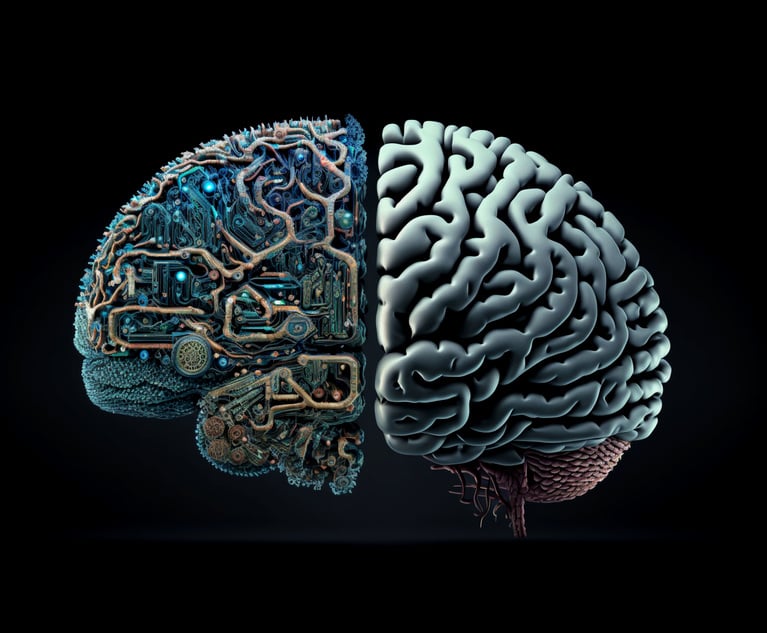Stephanie Wilkins
Stephanie Wilkins is the Editor-in-Chief of Legaltech News at ALM. She has spent the better part of the past decade following the evolution of legal tech and learning how it can help in-house counsel, law firms and others in the legal industry. As a former practicing litigator, she is particularly interested in how legal tech can and should be used in real-life practice and the valuable differences it can make. Stephanie is also keenly interested in shining a light on the ways legal tech is being used to help the greater good.

February 15, 2024 | Legaltech News
E-Discovery Technology, Provider: Relativity"First and foremost, encouraging innovation in the legal industry begins with understanding where challenges start to emerge," said Taylor Park, Content Marketing Manager at Relativity.
By Stephanie Wilkins
7 minute read

February 15, 2024 | Legaltech News
Small Law Firms Must Take Action and Address Cybersecurity and Privacy RegulationsSmall law firms must prioritize cybersecurity and privacy regulations to protect their clients' sensitive information and maintain their professional reputations.
By Daniel B. Garrie Esq., Peter A. Halprin, Esq., and Elsa Ramo, Esq.
9 minute read

February 14, 2024 | Legaltech News
New Law Company of the Year: New Era ADR"Legal innovation is not just about adopting novel technologies, but reshaping the very fabric of how the industry operates," said Rich Lee, Co-Founder and CEO of New Era ADR.
By Stephanie Wilkins
7 minute read

February 13, 2024 | Legaltech News
Privacy Governance and Artificial IntelligenceAI systems continue to advance without a clear consensus on principles or a process to assess and mitigate AI risk. However, many state and federal governments are developing risk measurement and mitigation strategies that parallel privacy governance requirements.
By Lynn Parker Dupree, Finnegan, Henderson, Farabow, Garrett & Dunner
6 minute read

February 13, 2024 | Legaltech News
Best Use of AI, Most Innovative Legal Ops & Innovator of the Year, In-House: Ford Motor Company"Embracing innovation isn't an option, but a necessity—it positions legal departments as change catalysts that can spark industry-wide transformations," said Darth Vaughn, Managing Director, Legal Ops+ and Litigation Counsel at Ford Motor Company.
By Stephanie Wilkins
8 minute read

February 13, 2024 | Legaltech News
Women of Legal Tech: 'Trust Marked the Turning Point of My Career,' Says Sherry KappelSherry Kappel, Evangelist at Litera, discusses what her first seat at the table taught her about privilege and responsibility, how a small act of trust can change the trajectory of a career and a company, and the biggest technology achievements she's seeing in firms today.
By Alma Asay
8 minute read

February 12, 2024 | Legaltech News
Best Use of Artificial Intelligence—E-Discovery & Litigation, Provider: Casetext"Early access to GPT-4 meant a once-in-a-career opportunity to build something no one ever had and no one else could. We HAD to make it work," said Jake Heller, CEO + Co-Founder of Casetext, Part of Thomson Reuters.
By Stephanie Wilkins
6 minute read

February 12, 2024 | Legaltech News
The Future of Tech-Enabled Law Practice: Balancing AI's Precision with Human InsightThe legal field stands at a critical crossroads where it needs to balance the rule-based, algorithmic, and data-driven logic of LLMs against the human lawyer's ability to interpret, strategize, and empathize, applying AI-generated results in tandem with human insight to address clients' issues comprehensively.
By Olga V. Mack, Robert Hanna, Kassi Burns, CJ Webster, Colin Levy, and Humira Noorestani
12 minute read

February 09, 2024 | Legaltech News
Best Use of Artificial Intelligence, Law Firm: DLA Piper"Once you understand that lawyers are dealers in information, it is easy to see that AI can enhance every stage of their work," said Bennett Borden, Partner and Chief Data Scientist at DLA Piper.
By Stephanie Wilkins
7 minute read
February 07, 2024 | Legaltech News
Nervous System: 32-Bit Computers Dancing Backwards in High HeelsFantastic technological leaps forward may be possible, but they leave behind a frustrated base of users invested in abandoned tech. One such example in the 1970s was the rise of 32-bit memory structures, which threatened to render the existing suites of 16-bit-based software code obsolete.
By David Kalat, BRG
6 minute read
Trending Stories
- 1Judge Denies Sean Combs Third Bail Bid, Citing Community Safety
- 2Republican FTC Commissioner: 'The Time for Rulemaking by the Biden-Harris FTC Is Over'
- 3NY Appellate Panel Cites Student's Disciplinary History While Sending Negligence Claim Against School District to Trial
- 4A Meta DIG and Its Nvidia Implications
- 5Deception or Coercion? California Supreme Court Grants Review in Jailhouse Confession Case
More from ALM
- Legal Speak at General Counsel Conference East 2024: Match Group's Katie Dugan & Herrick's Carol Goodman 1 minute read
- Legal Speak at General Counsel Conference East 2024: Eric Wall, Executive VP, Syllo 1 minute read
- Legal Speak at General Counsel Conference East 2024: Virginia Griffith, Director of Business Development at OutsideGC 1 minute read



